The road home starts here
November 16, 2012
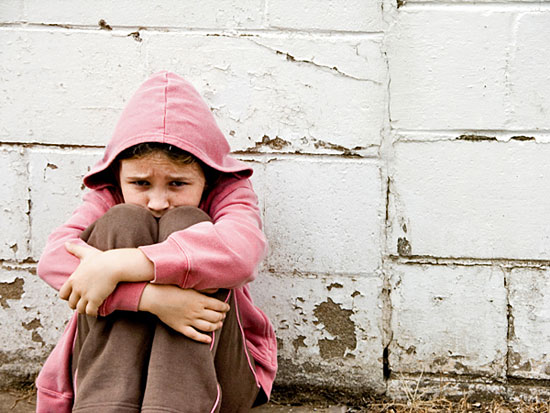
Children, families and veterans are among the more than 50,000 people living on L.A. county's streets.
As Thanksgiving approaches and we gratefully count our blessings, we also reflect on those who are consigned to society’s sidelines, living without roofs over their heads and cut off from the comforts of home and family.
They include, in our county alone, thousands of veterans, thousands of young people and families, thousands with physical disabilities and tens of thousands more who are mentally ill.
Reducing their numbers is our moral obligation, a responsibility we all share. Within Los Angeles County government over the course of the past year, we’ve taken that responsibility to heart and created something unprecedented to set us on the right course.
For the first time, we’ve brought together all the diverse departments with a role to play in preventing and ending homelessness and combined them into a powerful and dynamic force—the Los Angeles County Interdepartmental Council on Homelessness.
On November 15, the council’s initial year of work culminated in our adoption of the county’s first-ever roadmap for addressing homelessness. This roadmap taps into the collective wisdom, expertise, street smarts and tactics of more than a dozen departments and establishes how each will play a role in finding solutions and aiding those who so desperately need it.
It’s intended to cut through bureaucratic obstacles and focus on results, including more permanent supportive housing, better data sharing and teams that will work across departmental lines to provide services and leverage available funding for maximum impact. Proven, money-saving successes like Project 50 can become models for a countywide “housing first” approach.
But a roadmap is just that—a guide to where we’re going. It’s only as good as the drivers behind the wheel, and clearly, there will be many detours, off-ramps and obstacles to navigate before we reach our destination.
In other words, as challenging as it was to create, coming up with the roadmap was easy compared to the daunting journey that lies ahead.
As I’ve said before in this space, and no doubt will again, homelessness remains a great stain on our society. For a country as rich and well-endowed as ours, it is shameful and inexplicable to have so many of our fellow citizens sleeping out on the streets each night, including children, families and veterans who have answered the call of service to our nation.
We owe them better. With more than 50,000 homeless people counted on our streets last year, the need for action and for true, lasting results is immense.
It is our time—and our obligation—to do something big.
We’ve got the map. Where we go from here is up to us.
Posted 11/16/12
New hope for our tiniest homeless
August 30, 2012
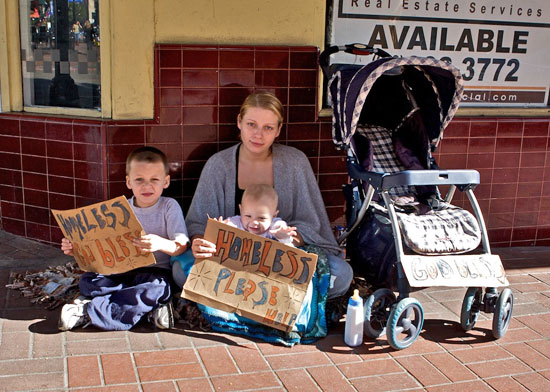
A $25 million committment by First 5 LA holds the promise of housing and services for young homeless children.
There are an estimated 3,000 children—5 years old and younger—who endure lives of homelessness every day in Los Angeles County. By all measures, they face a bleak future. According to studies, homeless youngsters are 12 times more likely to end up in foster care, and they’re twice as likely to suffer learning disabilities. By the age of 12, large numbers of them will have witnessed a violent event.
This week, the First 5 LA commission began developing the framework for an unprecedented “fast-track” effort to end this tragic cycle by committing $25 million to place families of these vulnerable youngsters in permanent supportive housing.
“There is a tremendous social cost for nearly 3,000 of our youngest children to be left without a safe, stable home every night,” said Supervisor Zev Yaroslavsky, who earlier this year became First 5 LA’s chairman. “With this program, we are focusing for the first time on helping families with children prenatal to age 5 who are struggling with homelessness daily and nightly in Los Angeles County.”
The multimillion dollar effort was initiated in July through a Yaroslavsky motion after First 5 LA released a study of the problem. It’s modeled after programs that have proven highly effective in restoring the lives of chronically homeless adults in Los Angeles and across the nation. The idea is to give a person a permanent home while surrounding him or her with a variety of services, including mental health and medical services.
A Los Angeles County analysis of the pioneering Project 50 on Skid Row showed that not only were participants benefiting, but the public was saving money on emergency rooms, jails and other costs associated with long-term homelessness. The Project 50 model, also championed by Yaroslavsky, is now being replicated throughout the region and by the U.S. Department of Veterans Affairs.
The $25 million committed by First 5 LA to house homeless children is part of a broader initiative to accelerate the expenditure of $400 million for various services aimed at the county’s babies, toddlers and preschoolers. Last year, a toughly-worded audit found, among other things, that the agency had been sitting on a surplus of nearly $800 million, prompting a change of leadership. First 5 LA and similar agencies throughout California are funded by a voter-approved 50-cent tax on tobacco products sold in the state.
At its meeting this week, the commission said it would begin soliciting applications for the funds in mid-September and start awarding the money in December.
A “new day” for First 5 LA
July 17, 2012
It has been less than a year since Los Angeles County threatened to take over First 5 LA.
Created by voters to channel tobacco-tax revenues into programs for babies, toddlers and preschoolers, the independent agency had been accused of sitting on more than $800 million. A scathing audit had accused the organization of mismanagement and overstaffing. Meanwhile, much-needed initiatives for local kids were falling by the wayside.
What a difference nine months can make.
Last week, the commission overseeing First 5 here approved an accelerated plan to unleash nearly $400 million for services for the county’s littlest residents.
The plan, which is expected to serve up to 200,000 children countywide over the next five years, will almost immediately expand several existing programs and create some important new ones.
Among the new initiatives: a $25 million push to launch permanent supportive housing for homeless families with small children; a $40 million expansion of dental care for children age 5 and younger, and an innovative $4.1 million partnership with UCLA to bring mobile vision care to preschoolers starting in September.
Additionally, First 5 will spend more than $100 million to partner with the county on expanded programs to bring health insurance to low-income children and to address childhood obesity, parenting problems and substance abuse among parents of young children.
That money will be tied to multi-year agreements to ensure ongoing funding, and fast-tracked to the Department of Mental Health, the Department of Public Health and other partner agencies so that they can immediately qualify for funding matches.
“What’s impressive is not just the amount of money, but the speed, which is so important in light of the needs of our 0-5 kids,” says First 5 Chief Program Officer Antonio Gallardo. “First 5 used to be known for taking forever, but all these things are primed to be implemented in the next three to six months. That’s a 180-degree turnaround from the way we used to do business.”
First 5 was created in 1998, after California voters approved Proposition 10, a 50-cent tax on tobacco products that was championed by actor-director Rob Reiner. The money was to be locally administered and dedicated to child development programs for children aged 0-5.
Almost from the start, the tax generated immense sums. In most of the state, the revenues were administered directly by the counties. In Los Angeles, however, First 5 was overseen by a county-appointed commission and run by an independent agency.
Gallardo says that initially, the money piled up because it took several years to assess needs and to set up First 5 LA, the largest of the state’s 58 First 5 organizations. But when 2011 arrived with a local surplus approaching $1 billion, the untapped pots of money in Los Angeles and several other counties that had been slow to use their share of the funds became a tempting target for Gov. Jerry Brown, who’s been saddled with a huge budget deficit. He proposed diverting half of all the current and future Prop. 10 money into the state budget for children’s health.
The proposed diversion threatened to take about $450 million from First 5 LA’s swollen reserves, plus about $50 million into the future—a prospect that not only prompted a blizzard of lawsuits, but spurred Supervisor Michael D. Antonovich to ask Harvey M. Rose Associates to conduct the independent October audit.
The audit found no malfeasance, but was highly critical of the management under then-chief executive Evelyn Martinez, who had allegedly been so conservative with First 5 LA’s money and had operated with so little oversight by its commission that the organization was “at risk of not fulfilling its mission.”
“It was almost as if they were hoarding the money,” recalls Supervisor Zev Yaroslavsky, who, as this year’s chairman of the Board of Supervisors, automatically chairs the First 5 LA commission. “But the idea was not to have the biggest bank account in the county. It was to achieve the greatest positive outcomes for children who need help.”
Martinez resigned and general counsel Craig Steele took over as interim CEO in November after the Board threatened to strip First 5 LA of its independent status. Then in March, a court challenge invalidated the state’s claim to First 5’s revenues.
Now First 5 LA is searching for a new CEO. The new spending plan is expected to whittle the surplus to $122 million this fiscal year and $90 million by 2016.
Yaroslavsky, a longtime advocate for the homeless, says he is most excited about ambitious plans to jump-start housing and wraparound services for homeless children and their often-young parents, using a template that has been used successfully to house and treat other populations of street people, such as veterans and the chronically mentally ill.
“We have 3,000 kids in L.A. County below the age of 5 who are homeless, and that’s 3,000 too many,” he says.
But the supervisor also pointed with anticipation to a $4.1 million vision care program based on one that has been a remarkable success for the past decade in San Diego County, run by Dr. Stuart Brown, an ophthalmologist affiliated with both UCLA and UC San Diego. Brown says he expects to build on a small UCLA vision-mobile program to bring ongoing vision care to at least 20,000 preschoolers a year in this county.
“There’s plenty of money left, but we have moved a considerable amount out the door for programs and kids who need them,” says Yaroslavsky. “It’s a new day for First 5 LA.”
It pays to grow Project 50
June 7, 2012

Jacques Walker, an original Project 50 client, in the rooftop garden of Skid Row Housing Trust’s Cobb Apartments.
When we first launched Project 50, targeting the most vulnerable homeless residents on Skid Row for housing, medical care, mental health and other critically important services, we knew it was the right thing to do.
What we didn’t know for sure was whether this pilot project would pencil out in Los Angeles—as it has elsewhere—as a financially smart way to cut the incredibly high costs associated with chronic, long-term homelessness.
Now we know.
A new report assessing the cost-effectiveness of Project 50 is in, and the results offer powerful support for the economic benefits of doing the right thing by some of the people our society has shamefully left by the wayside for far too long.
The study, by the county’s Chief Executive Office, found that Project 50 in its first two years actually saved more money than it spent—with $3.045 million invested in the program resulting in savings of $3.284 million. Put another way, each permanent supportive housing unit we provided over those two years saved the taxpayers $4,774.
Even for Project 50’s most committed supporters like me, those are some mighty impressive numbers.
Yes, we spent more money on mental health care and substance abuse treatment for Project 50 participants—but we saved even larger amounts than we would have spent incarcerating them or caring for them in our clinics and emergency rooms if their conditions had gone untreated.
What’s even more intriguing is how Project 50 participants’ mental health care costs stacked up compared to those of a similar group of homeless people not in the program. Both groups had rising mental health care costs after Project 50 started—but the Project 50 group’s care cost significantly less. That’s because they received mental health outpatient care, unlike members of the comparison group, who needed far costlier hospital and emergency room crisis treatment.
Since our goal in launching this project in 2008 was to move the most hard-core homeless people off the streets, while supporting them with services to combat their substance abuse and mental health demons, these data provide vindication for the “housing-first” approach.
If we can meet people where they are—not where we wish they were, in terms of drug and alcohol abuse—we can make a profound difference, not just in their lives but in the county’s bottom line.
Since Project 50 began, we and our coalition of partner agencies have expanded the concept beyond Skid Row to reach chronically homeless people in Hollywood, Santa Monica, Venice and Van Nuys. We’ve also launched Project 60, which serves chronically homeless veterans.
In all, nearly 600 lives have been touched by this remarkable program.
This new assessment of Project 50’s cost-effectiveness shows that it’s time to think even bigger. I believe we can set our sights on reaching all of the approximately 11,000 chronically homeless individuals who sleep on our county’s streets each night.
Taking a “housing first” approach with each of them is the right thing to do—and it turns out to be a great investment, too.
Read the Los Angeles Times’ report on the new study here.
Posted 6/6/12
Homeless team gets to work
March 28, 2012
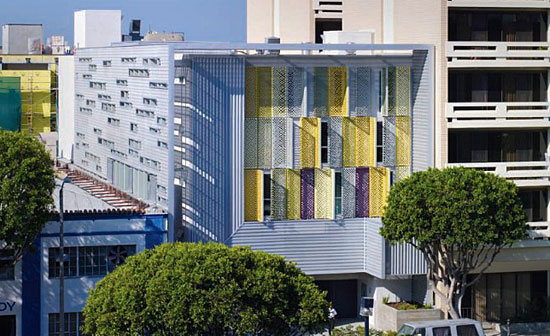
Homeless service provider Step Up on Second built this Santa Monica complex for permanent supportive housing.
The occasion was the inaugural meeting of the Interdepartmental Council on Homelessness, a body created through a Board of Supervisors motion authored by Mark Ridley-Thomas and myself. And make no mistake, despite the bureaucratic-sounding name, the council will make a measurable impact on homelessness because, for the first time, we’re pursuing a clearly defined county strategy: to provide permanent supportive housing with vital services to those most likely to perish on our streets.
In other words, if you want to end homelessness, then you must provide a home.
We know from our own experience that this “housing first” approach works. Back in 2007, in that same Hall of Administration conference room, we launched a pilot program called Project 50, championed by my office to house and provide supportive services to Skid Row’s 50 most chronically homeless people. Unlike earlier, narrower efforts, this one required coordination among multiple county agencies with varying responsibilities for this extraordinarily difficult population.
The goal was not only to save lives, but to save money, too, by reducing the high public cost of emergency room care and incarceration historically associated with chronically homeless individuals.
Since the successful launch of Project 50, the concept has been replicated throughout my 3rd District—in Santa Monica, Venice, Hollywood and the San Fernando Valley. The United Way has adopted the approach for its ambitious “Home for Good” campaign, as has the Department of Veterans Affairs with its own Project 60 in collaboration with my office. In all, more than 500 people have been placed in permanent supportive housing since the initiation of Project 50.
Now, with the establishment of the interdepartmental council, Los Angeles County is finally aligning its will and existing resources behind the housing-first model, offering real hope to the most vulnerable among the 51,000 souls in our county without homes. Around the table on Wednesday were top officials from such crucial departments in the fight against homelessness as mental health, children and family services, probation, health services, public health, social services, community development, the superior court and sheriff’s department.
To be sure, we face a huge challenge here, in the nation’s epicenter of homelessness. And our vast county bureaucracy is not naturally inclined toward this kind of multi-agency plan of attack, one that eliminates barriers and accelerates the time between an idea and its implementation.
Still, as the council’s first chairman, I’m convinced that in the months and years ahead we can house not just hundreds, but thousands of people who, like any other resident of our county, deserve more than another well-intentioned plan that ends up on a shelf gathering dust.
Posted 3/28/11
Skid Row celebrates
November 30, 2011
On Saturday, the Skid Row Housing Trust is inviting neighborhood residents and the public at large to join together in a day of entertainment and interaction.
The group’s director of external affairs, Molly Rysman, says the event gives often-isolated individuals a chance to socialize.
“The goal is to help residents with community integration,” she says. “It’s an opportunity for people to come together and get to know their neighbors.”
Singer-songwriter Mary McBride will headline the event as part of “The Home Tour,” her series of charity performances in supported housing communities, long term health care centers, homeless shelters and other institutions. There’ll be other live musical acts, as well as karaoke, food and a fashion show.
Skid Row Housing Trust currently manages and operates 21 homes for the homeless of Los Angeles, providing a range of support services, including health care referrals and substance abuse treatment.
The organization also is a partner in Project 50, a Los Angeles County pilot program initiated by Supervisor Zev Yaroslavsky in 2007. The project originally targeted 50 individuals considered most likely to die on the streets of Skid Row. Using lessons learned from the pilot, the program has moved beyond the initial mission; to date, 92 chronically homeless people have been placed in permanent supportive housing through Project 50.
The block party takes place on Saturday, December 3, from 1 p.m. to 4 p.m., weather permitting. Parking is located at the Skid Row Housing Trust lot, 1326 Industrial Street. Please R.S.V.P. by calling (213) 683-0522, extension 159. The event is still seeking volunteers, too. If you want to pitch in, send an email to [email protected]. Of course, you can always support the organization’s ongoing efforts by donating online.
Posted 11/30/11
From this day forward
November 23, 2011

The wedding of Denny Lyons and Terrie Madrid on Santa Monica Beach was less a storybook ending than a new beginning for the chronically homeless couple. Their big day—Friday, November 18—came about with help from a program called Project 60, which assists veterans like Lyons, who served in the Navy Reserve, to find permanent supportive housing, health care and treatment for mental health and substance abuse issues. Now, with a federal housing voucher in hand, the couple can move out of the Samoshel homeless shelter and into their own apartment.
Posted 11/23/11
From this day forward
November 23, 2011
This is not a fairytale love story.
Over the course of 23 years together, Denny Lyons and Terrie Madrid have lived in an improvised lean-to on a deserted restaurant patio. They’ve had—and lost touch with—a now-teenaged daughter and son. They’ve battled illness, unemployment, substance abuse.
In short, this chronically homeless pair has lived on the bleak side of “for richer and poorer, in sickness and in health” in a way most couples can’t begin to imagine.
But now, after more than two decades of bad choices and bad breaks—and with a big assist from an initiative called Project 60—they just took a step in a new direction.
They got married.
Their wedding, celebrated Friday on the beach in Santa Monica and captured in the video above, clears the way for them to live together in their own apartment under a recently-issued federal housing voucher.
Beyond that important practical benefit, the ceremony also marked something of an emotional milestone—a tribute to staying together against long odds.
“It’s time,” said Lyons, 58. “She stood by me through thick and thin. It’s been real hard on her.”
Or, as the V.A. chaplain who performed the wedding put it: “This is a good example of love in action.”
Things started looking up for the couple about 11 months ago, when they entered the Santa Monica shelter called Samoshel, run by the Ocean Park Community Center. For now, and until they get their own apartment, they bunk down every night in separate men’s and women’s sleeping facilities. But they were able to bring their little dog, Bambi, with them into the shelter—a crucial point as they debated whether to come in off the streets last winter.
Progress has accelerated in recent weeks with Lyons’ admittance into Project 60. The initiative is devoted to finding what’s known as permanent supportive housing for homeless veterans like Lyons, who served in the Navy Reserve. It’s a spinoff of the better-known Project 50, which has targeted some of the most chronic cases on downtown Los Angeles’ Skid Row with a holistic approach to housing, health care, mental health and substance abuse treatment. It’s estimated that 7,000 veterans are now homeless on Los Angeles County streets. Project 60 aims to help some of the most vulnerable among them, like Lyons, through a partnership of the West Los Angeles V.A., Los Angeles County and other government and nonprofit agencies.
Lyons is now receiving veterans’ benefits. He has been granted probation for what he described as old drug warrants that had him “living the life of a fugitive, more or less.” And he’s no longer panhandling on the street with a sign reading: “Smile. It could be worse. You could be me.”
Lyons, who said he once worked regularly in construction, said he’s been unable to find employment since he developed vascular necrosis in both hips. “It wiped out my ability to work,” he says.
And Madrid, 56, said she has lost touch with family—the18-year-old daughter and 15-year-old son she and Lyons had together, and her six other adult children. She said wistfully that she has tried unsuccessfully over the years to get back in contact with her mother and youngest child, who she thinks are living in Whittier. As she and Lyons sat down on their wedding day to list some of the good things that have happened to them lately, she said all that was missing was a reconnection with her family.
Still, “compared to where they were a year ago, it’s just night and day,” said Ben McAvay, who served as Lyons’ best man.
McAvay said he first met the couple 2½ years ago when they would stand every day at his bus stop as he headed to law school classes at UCLA. He said the wedding is just the “icing on the cake” in a saga of struggle and life changes.
“This is just like the cool part of the story,” McAvay said.
The wedding ceremony took place just south of the Santa Monica Pier—not far from where Lyons and Madrid once settled their sleeping bags into makeshift foxholes they’d dug in the sand to sleep each night during a particularly tough 8-month stretch.
A small knot of friends (human and canine) gathered to watch, as cyclists, rollerbladers and Hot Dog on a Stick customers wandered by, oblivious to the big occasion playing out in the shadow of the pier’s carousel. Lyons wore a tie and jacket (courtesy of a local thrift shop) and Madrid arrived in the wedding dress that the residents’ council at Samoshel bought for her, using money earned collecting bottles and cans. The bride had to keep reminding herself that she could now smile broadly for photos, thanks to a gift of dental work funded by her maid of honor, Linda Nixon.
Bambi, prompted by Samoshel project director Patricia Bauman, delivered the rings at the appropriate moment. Then it was time for retired U.S. Army Chaplain Herman Kemp of the V.A. to pronounce the couple husband and wife. There was applause, and a few happy barks.
Many challenges lie ahead, including surgery to replace both of Lyons’ hips.
But on Friday, there were blessings to be counted—among them the resilience to keep moving forward together over the course of many years.
“Hope,” Lyons said, “is the one thing you’ve got to keep.”
Posted 11/22/11
The fight of their lives
February 17, 2011
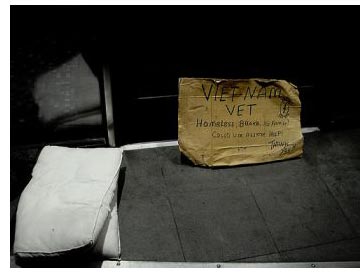 It’s hard to imagine a day when thousands of the homeless people on our streets were spit-and-polish members of the armed services, dispatched to points across the nation and throughout the world. Now, here they are in Los Angeles, an estimated 7,000 of our former troops, waging a war of survival.
It’s hard to imagine a day when thousands of the homeless people on our streets were spit-and-polish members of the armed services, dispatched to points across the nation and throughout the world. Now, here they are in Los Angeles, an estimated 7,000 of our former troops, waging a war of survival.
These men and women are no longer symbols of our military might; they are evidence of our shameful failure to protect them at home.
In interviews with outreach workers, they tell of lives plagued by sickness and despair. They’ve been stricken with everything from heart disease to tuberculosis to Hepatitis C and cancer. They’ve battled the demons of alcoholism and addiction. They’ve suffered assaults on the streets and been hospitalized and jailed numerous times—an expense that falls squarely on the public.
Help, however, is on the way.
On Wednesday, the Department of Veterans Affairs and a collection of federal, state and local agencies announced the creation of Veterans to Home, Project 60, a program aimed at providing permanent housing and support services to 60 veterans who’ve been identified as the most likely to die on the streets. It’s a modest but monumental step forward.
The veterans’ program is modeled after Project 50, an effort I’ve championed to provide permanent supportive housing to 50 of Skid Row’s most vulnerable and chronically homeless individuals.
The concept, taking root in cities across the country, is that if you first give a person a permanent home, then they’ll be far more likely to take advantage of the services made available to them, including health and mental health help. Taxpayers, in turn, will be spared the enormous costs of hospitalizations and incarceration.
Project 50 has demonstrated that the concept works.
The truth is that a concerted effort like this for our struggling veterans was long overdue. These kinds of homeless programs require immense cross-jurisdictional cooperation, something that isn’t a hallmark of government. But in this case, the cause has trumped the rivalries.
I salute Veterans Affairs for rising to the challenge, providing much needed housing vouchers, as well as the services of mental health and substance abuse experts.
The agency has tremendous resources, far more than any county in the country and far more than any nonprofit. If the VA becomes convinced that this is the way to solve veteran homelessness, then a tsunami of housing and services could follow for a significant slice of our homeless population.
I’d also like to thank our four private partners in this effort who have been in the forefront of the “housing first” movement—OPCC, Step Up on Second, St. Joseph Center and San Fernando Valley Community Mental Health Center. These organizations are supplying housing for the veterans and sharing their expertise with federal officials.
So next November, on Veterans Day, I know that I’ll not only be remembering those we’ve lost to battle but also those enduring a living hell on our streets in Los Angeles.
For more on this effort, here’s a column by Los Angeles Times columnist Steve Lopez and an editorial that recently appeared in The New York Times.
Posted 2/17/11




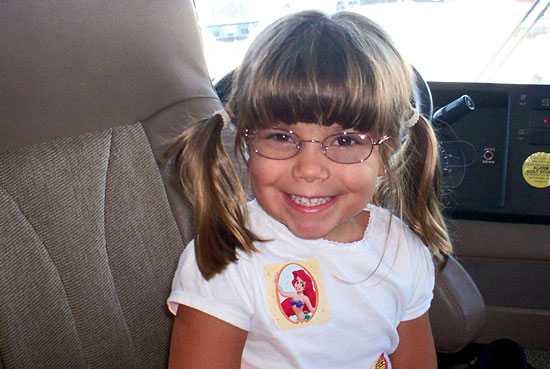

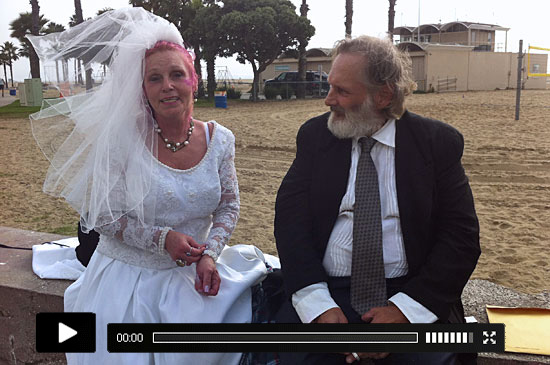







 405 bridge work causes a stink
405 bridge work causes a stink

